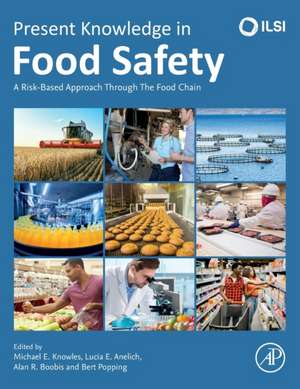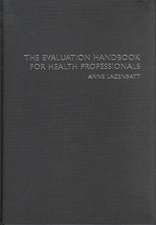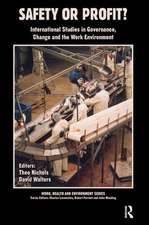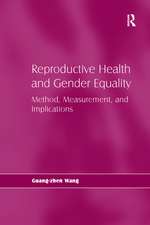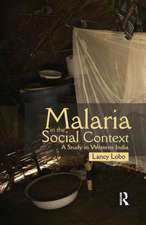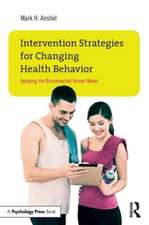Present Knowledge in Food Safety: A Risk-Based Approach Through the Food Chain
Editat de Michael E. Knowles, Lucia Anelich, Alan Boobis, Bert Poppingen Limba Engleză Paperback – 10 oct 2022
This book is aimed at a diverse audience, including graduate and post-graduate students in food science, toxicology, microbiology, medicine, public health, and related fields. The book's reach also includes government agencies, industrial scientists, and policymakers involved in food risk analysis.
- Includes new technologies such as nanotechnology, genetic modification, and cloning
- Provides information on advances in pathogen risk assessment through novel and real-time molecular biological techniques, biomarkers, resistance measurement, and cell-to-cell communication in the gut
- Covers the role of the microbiome and the use of surrogates (especially for viruses)
Preț: 994.21 lei
Preț vechi: 1305.38 lei
-24% Nou
190.24€ • 199.03$ • 158.03£
Carte tipărită la comandă
Livrare economică 26 martie-09 aprilie
Specificații
ISBN-10: 0128194707
Pagini: 1188
Dimensiuni: 216 x 276 mm
Greutate: 2.69 kg
Editura: ELSEVIER SCIENCE
Cuprins
1. Natural toxicants in plants, including herbs and spices and assessment of exposure; 2. Soil and air: potential contributions to plants of minerals and organic chemicals; 3. Water: potential industrial and other contaminants to plants; 4. Agrochemical residues; 5. Mycotoxins during production and storage; 6. Advances in analytical methodology for contaminants in plants
Part 1: Changes in the chemical composition of food throughout the various stages of the food chain: Animal and milk production 7. Feed contamination; 8. Veterinary drug residues from therapeutic and growth promotion; 9. Analytical methodology and assessment of contributions to exposure
Part 2: Changes in the chemical composition of food throughout the various stages of the food chain: Fishing and aquaculture 10. Pollutants in sea and fresh water; 11. Veterinary drug residues in aquaculture; 12. Analytical methodology and assessment of respective contributions to exposure to chemical contaminants from fish consumption
Part 3: Changes in the chemical composition of food throughout the various stages of the food chain: Storage and transport of raw materials, manufacture, and packaging 13. Fumigation and other treatments during storage and transport, including in-factory use of detergents and lubricants during manufacture; 14. Additives and processing aids used in manufacturing and the effect of processing; 15. Flavours, including taste and flavour modifiers; 16. Production of contaminants during thermal processing, including home preparation; 17. Fraudulent adulteration; 18. Migration of packaging and labeling components and advances in analytical methodology supporting exposure assessment; 19. Safety assessment of recycled plastic packaging for food use; 20. Analytical methodology and surveillance data suitable for exposure assessments (excluding packaging); 21. Dietary supplements (upper safe levels) and ‘health foods’ components
Part 4: Changes in the chemical composition of food throughout the various stages of the food chain: Identification of emerging chemical risks 22. Critical review of methodologies for identification of potential contamination of food and food raw materials; 23. Identification of emerging contaminants through surveillance networks: the EU Norman Project
Part 5: Changes in pathogenic microbiological contamination of food post-farm gate 24. Common or natural occurrence of pathogens, including fungi, leading to primary and secondary product contamination; 25. Contributions of pathogens from soil and air, including insects and fertilisers to food post-farm gate; 26. Contributions of pathogens from irrigation water to food post-farm gate; 27. Testing methodologies and assessments of respective contributions for pathogens post-farm gate
Part 6: Changes in pathogenic microbiological contamination of food throughout the various stages of the food chain: Animal production, including milk 28. Microbial contamination of animal feed; 29. Hygenic status of animals, including milking; 30. Testing methodology including interpretation of concentration ranges and DNA analyses
Part 7: Changes in pathogenic microbiological contamination of food throughout the various stages of the food chain: Fish and aquaculture 31. Pathogens in fresh water fish, sea fish, shellfish, and algae; 32. Testing methodology and assessment of concentrations
Part 8: Changes in pathogenic microbiological contamination of food throughout the various stages of the food chain: During storage transport, manufacture, including in-home and packaging 33. Temperature and water activity control of pathogens during storage and transport; 34. Reduction of microbial load by processing including modified atmosphere packaging (MAP (and good manufacturing practice (GMP); 35. Quality of water, including sea water, used in processing and application of antimicrobial agents; 36. Testing methodology and assessment of ranges of contamination; 37. Fraudulent adulteration and potential for contamination; 38. Cross-contamination in the home
CURRENT AND EMERGING ADVANCES IN FOOD SAFETY EVALUATION: CHEMICALS 39. The Risk Assessment Paradigm for chemicals: A critical review of current and emerging approaches; 40. The use and validation of in vitro methodologies; 41. Uncertainties in hazard identification in animals and prediction of toxicity in humans, particularly with new physical states, eg, nanomaterials and radionuclides; 42. Exposure assessment: Critical review of current methodology - from budget methods to stepped deterministic methods; 43. Exposure assessment: Critical review of food consumption data and dietary intake methodologies and their impact on exposure assessment; 44. Exposure assessment: Food surveillance and monitoring programmes - contributions at the population and individual levels; 45. Exposure assessment: Modelling approaches including probabilistic methods, uncertainty analysis and aggregate exposure from multiple sources; 46. New approaches to risk characterization; 47. Potential role for computerized automated hypothesis generation in risk assessment; 48. Risk-benefit assessment, including nutrients (USL); 49. Exposure-led risk management including genotoxic vs non-genotoxic carcinogens and precautionary principle; 50. Role of epidemiology in risk assessment and management; 51. Potential role of ‘big data’ in risk assessment and/or management; 52. Relative contributions to public health from natural and exogenous chemicals in the diet; 53. EFSA risk assessment of mixtures in the food chain
CURRENT AND EMERGING ADVANCES IN FOOD SAFETY EVALUATION: PATHOGENIC MICROORGANISMS 54. Critical review of the risk assessment and management of pathogens in food; 55. Role of real-time DNA analyses, biomarkers, resistance measurement and ecosystem management in pathogen risk analysis; 56. Identification and exposure assessment of emerging pathogens, including viruses, predictive modeling; 57. Potential transfer of viruses implicated in human disease through food; 58. Non-culturable viruses and the use of surrogate viruses in food safety paradigms; 59. Role of the (gut) microbiome in food safety; 60. Bacterial cell-to-cell communication and potential relevance to food safety; 61. Significance of identifying microbial DNA in the absence of actual live organisms in foods and raw materials; 62. Whole genome sequencing for food safety (FAO); 63. Drug-resistant bacteria from ‘farm to fork’: impact of antibiotic use in animal production; 64. Role of “molecular tweeting in food safety; 65. Rapid confirmation of microbes in food and water using MALDI-TOF
SAFETY ASSESSMENT OF GENETICALLY MODIFIED ORGANISMS AND OTHER BIOLOGICAL ALTERATIONS 66. Risk assessment of genetically modified plants, including methods for identifying potential allergenicity; 67. Risk assessment of genetically modified foods, including cloned animals; 68. Prions: detection of Creutzfeld-Jakobs disease and links to bovine spongiform encephalopathy in beef
FOOD SAFETY: RISK PERCEPTION AND COMMUNICATING WITH THE PUBLIC 69. Public perception of relative risks to public health from exposure to naturally occurring versus exogenous chemicals in the diet; 70. Microbiological risks versus putative chemical risks based on hazard rather than exposure: can it be rationalised for public understanding?; 71. Communicating about ‘risk ‘in relation to food with the public and countering media alarmism; 72. Communicating about genetically modified organisms with the public: identifying and allaying real concerns
NEW AND EMERGING TECHNOLOGIES: CONSUMER CONCERNS 73. Consumer attitudes about the use of new technologies in agrifood industries: allaying concerns
HAZARD VERSUS RISK-BASED APPROACHES TO FOOD SAFETY REGULATIONS 74. Pros and cons of hazard vs risk-based approaches to food safety regulation
IMPACT OF FOOD SAFETY ON GLOBAL TRADE 75. Facilitation of fair and safe trade: a review of international and national regulatory controls
CLIMATE CHANGE, POPULATION DEMOGRAPHICS, URBANISATION AND ECONOMIC GROWTH: IMPACT ON FOOD SAFETY 76. Food safety implications of changes in climate, population demographics, economics, and increased urbanization
Recenzii
Nonetheless, it is an important work, and I believe that everyone involved in food safety should be familiar with it.
This work makes every effort to be comprehensive. As a result, only a comparatively small part of it relates directly to fresh produce, but the whole volume contains insights in various areas that are of direct value.
Or, to put it in the book’s terms: “Using a risk-based evaluation strategy increases the ability to use alternative approaches and new technologies to inform risk assessment, better characterize risk, and improve management decisions. These new, scientifically more robust methods are more human relevant and—a humanitarian benefit— “also frequently decrease the number of animals needed to determine human risk (1071).
All of this may seem terribly abstract, but it will have a huge impact on which agrichemicals and GMO crops will be used in the future and how." --Richard Smoley, Blue Book Services, Inc.
Descriere
Present Knowledge in Food Safety: A Risk-Based Approach Through the Food Chain presents approaches for exposure-led risk assessment and the management of changes in the chemical, pathogenic microbiological and physical (radioactivity) contamination of ’food’ at all key stages of production, from farm to consumption. This single volume resource introduces scientific advances at all stages of the production to improve reliability, predictability and relevance of food safety assessments for the protection of public health.
This book is aimed at a diverse audience, including graduate and post-graduate students in food science, toxicology, microbiology, medicine, public health, and related fields. The book's reach also includes government agencies, industrial scientists, and policymakers involved in food risk analysis.
- Includes new technologies such as nanotechnology, genetic modification, and cloning
- Provides information on advances in pathogen risk assessment through novel and real-time molecular biological techniques, biomarkers, resistance measurement, and cell-to-cell communication in the gut
- Covers the role of the microbiome and the use of surrogates (especially for viruses)
